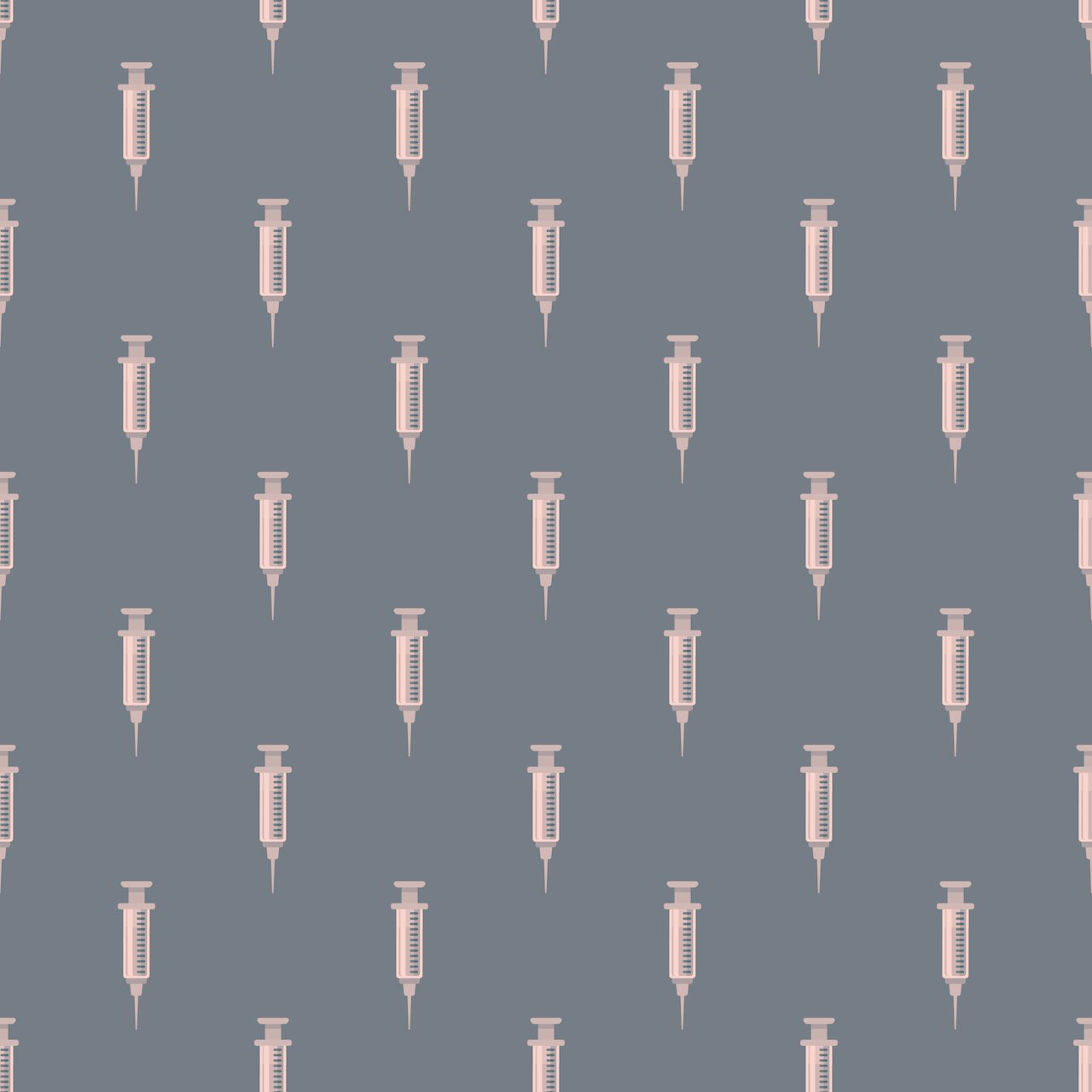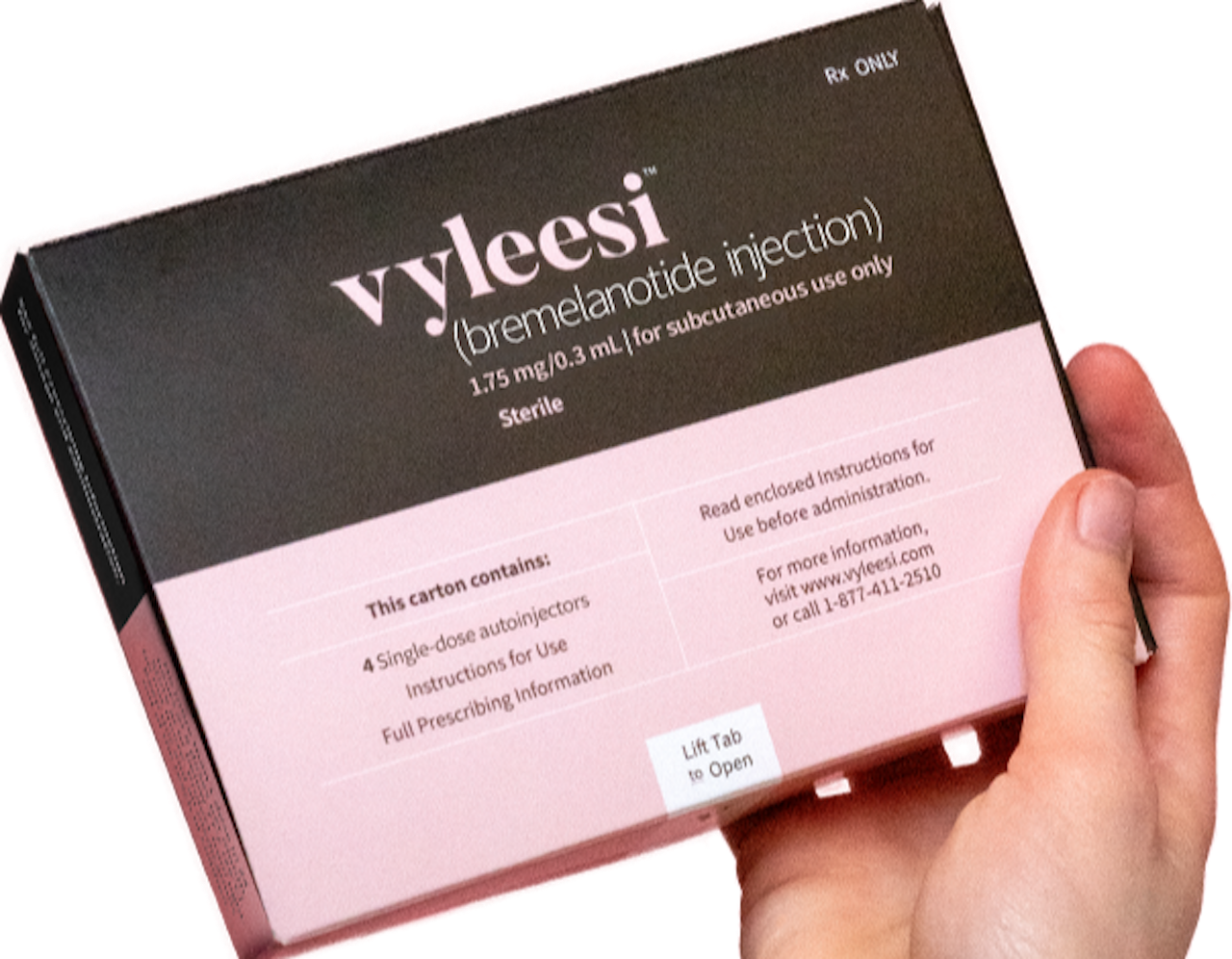On internet forums dedicated to bodybuilding, anabolic steroids, and erectile dysfunction, there are posts dating back to 2009 from men discussing the substance PT-141, also known as bremelanotide.
Bremelanotide is a variation of a substance called Melanotan II, which has been used for tanning, but can cause spontaneous erections. It can be purchased via the online grey market as a “research chemical,” i.e. a substance that’s technically not meant for human consumption that, when ingested, often has psychoactive effects. Unsurprisingly, men love the stuff, and it’s controversial enough to warrant its own Vice article.
Sprinkled throughout various forums, though, are posts suggesting bremelanotide is not only a boon for bros. There are a few user experiences from women who say recreational use of bremelanotide contributed to multiple and more intense orgasms, a feeling of “constantly wanting sex,” and heightened sensitivity.
About a year and a half ago, my male partner and I took bremelanotide for the first time. While some recreational users obtain bremelanotide in crystalline form that they chop into a powder and snort, we got a liquid that we injected via syringe. A .5-milligram dose yielded no discernable results, but a couple months later we tried a 1-milligram dose. That did the trick.
After more than an hour, I started to feel a sense of warmth between my legs. Unsure if this was the extent of it, I took a shower. As I soaped up, I realized I was lingering on every part of my body; just grazing my legs or arms felt electrifying, tingly. I was hot, flushed, and hyper-sensitive before I experienced any sexual stimuli. My partner felt similarly, and when we had sex, my orgasm was a thunderclap — longer-lasting and powerful in a way that for me, usually only happens in my most turned-on state following prolonged foreplay. Having sex on bremelanotide was simply fun — when its effects hit, we grabbed each other giddily, feeling like we’d biohacked a next-level lust.
On September 1, 2019, the same bremelanotide that men on bodybuilding forums claimed gave them rock-hard erections hit the market as an FDA-approved prescription medication meant for women experiencing hypoactive sexual desire disorder (HSDD), which could loosely be defined as distress about one’s libido. It’s wrapped in pink packaging and marketed under the vaguely regal brand name Vyleesi. Readers of The Outline may know the drug, which comes in single-use, as-needed autoinjectors, as the “Horny Pen.”
Vyleesi is meant to treat HSDD in women who “have low sexual desire no matter the type of sexual activity, the situation, or the sexual partner,” and whose low sexual desire is “troubling to them,” according to the drug safety information on Vyleesi’s website. However, the guidelines for actually receiving a prescription for the drug are fairly narrow. The site stipulates that the drug is meant for women whose “low sexual desire is not due to: a medical or mental health problem, problems in the relationship, [or] medicine or other drug use.” In other words, for a woman to get Vyleesi, she must have inexplicable distress about her sex life. But in an age when men can obtain generic Viagra via an app, the hoops women must jump through in order to legally obtain a substance that may enhance their sex lives feels like another tired example of our culture’s inherent discomfort with female sexual pleasure.
Bremelanotide is thought to activate melanocortin receptors in the brain, which may play a role in some sexual functions, but the FDA states that “the mechanism by which bremelanotide improves sexual desire and related distress is unknown.” Calling Vyleesi “the female Viagra” is not quite right given its mechanism of action; where Viagra only increases blood flow to the penis, bremelanotide may be modulating the brain — hence its ability to have an effect on anyone.
Vyleesi’s auto-injectors contain 1.75 milligrams of bremelanotide in each dose (there are a few inactive ingredients as well), and are to be administered at least 45 minutes “before anticipated sexual activity.” Even being below the dosage at which Vyleesi is administered, the one milligram of bremelanotide I took was enlightening. Vyleesi’s meant to address a lack of sexual desire, but when I took it, it wasn’t just wanting to have sex that walloped me — it was my physical arousal, my body readying itself for touch or stimulation.
“Desire is, ‘I would like to have sex.’ Arousal is, ‘I get turned on,’” said Bat Sheva Marcus, clinical director of Maze Women’s Sexual Health in New York. (Maze has prescribed Vyleesi, but told me that her patients haven’t given feedback yet.) However, even the medical establishment can fall into the trap of conflating the two. The most recent Diagnostic and Statistical Manual of Mental Disorders (the DSM-5) merged “female hypoactive desire disorder (HSDD)” and “female arousal disorder (FSAD)” into one diagnosis: female sexual interest/arousal disorder (FSIAD).
“When I look at this drug I feel it will be more effective for arousal than desire,” she told me.
Marcus pointed to the work of Rosemary Basson, a sexologist who has created a diagram to illustrate her perception of women’s sexual response. She’s explained that women may not often feel spontaneous desire, but initiate sex for other reasons, such as a craving for intimacy. They begin feeling aroused by sexual stimuli (“In this case, the drug,” Marcus said), and then desire kicks in.
That’s often my experience. I don’t have low sexual desire no matter the situation. Sometimes I want sex to feel closer to my partner, because we haven’t in a while, and I know it’ll be great once we get going. But if I’m exhausted, preoccupied, or feeling unsexy, I know it’ll be tough to get aroused. Bremelanotide first ignited that arousal so that my subsequent desire wasn’t “kicked in” so much as punted through the wall. It didn’t “fix” an element of my sex life, but it did enhance it as a whole.
“I’m all about women having choices,” Marcus said. “As long as it was built with a careful screening so that people knew the risks and benefits, knew it was safe, I think women should be able to determine for themselves what need is.”
The FDA says that in clinical trials, about 25 percent of women treated with Vyleesi experienced an increase in sexual desire compared to about 17 percent of women who took placebo. Thirty-five percent of patients treated with Vyleesi indicated a decrease of distress about their libidos, compared to 31 percent on placebo, and nearly 80 percent of women who completed the initial study opted into the voluntary extension phase, in which participants continue taking the drug for a longer period of time, so investigators can continue to observe effects. Those numbers don’t exactly position Vyleesi as a slam-dunk drug.
Barbara Carrellas, a sexologist in New York, agreed that Vyleesi’s clinical trial results are not very impressive. She objects to Vyleesi in terms of what she called the pharmaceutical industry’s “medicalization of desire, specifically women’s desire.” The pharmaceutical industry in this instance, she said, does not understand the conditions it’s attempting to medicate. When everyone’s baseline (the severity of one’s distress) and desired outcome (just how horny do you want to be?) are so personal, no one but each individual woman can truly understand what it would mean for Vyleesi to make them feel “better.”
“I am really upset about the degree to which big pharma, in conjunction with the media, are invested in telling women they’re broken,” Carrellas said. She added that desire is an “enormous universe [of a] topic,” affected by a woman’s physical and mental conditions, lifestyle, and emotions. Pharmaceutical interventions, she said, can reduce this huge universe into the question of, “Will a [drug] fix this or not?”
Women’s health is “multifactorial,” Marcus said. She added that with women, there are many potential tools — medications, talk therapy, practices such as using one’s “erotic brain” — that can offer “points,” as in a game, which can add up towards a satisfying sex life, however a person defines it. Vyleesi may be just one point.
“If you can get at the woman from a number of different angles, you’re going to be much more successful,” she said.
That’s why, Carrellas said, if a substance like Vyleesi exists on the market, then it should be offered and marketed differently: as a potentially pleasure-enhancing drug, available over the counter like a vitamin or a supplement (and in sex shops, she added), with all ingredients and potential dangers clearly listed on the packaging, along with the message, “We are not claiming this is a cure for lack of desire, but it might help.”
Personally, I would take bremelanotide again. For me, it felt akin to a particularly effective but rather involved sex toy; something I’d bust out when I’ve cleared my afternoon of appointments. I asked Marcus about the possibility of women getting their hands on Vyleesi without an HSDD diagnosis. She said it may depend on any one woman’s relationship with her doctor. “I don’t think if you say, ‘I’m great and I want to try it for fun,’ that most doctors will give it to you; drugs by nature have side effects,” she explained.
But, she continued, if a woman told her doctor that she’s used bremelanotide and realized sex on it is so much better than usual, and she didn’t realize that sex could be that much better, then maybe Vyleesi would be considered. I’d hope that I could have the kind of honest conversation about my sex life that Marcus suggests, and have my doctor really hear me. That’s what I’d hope for every woman.


